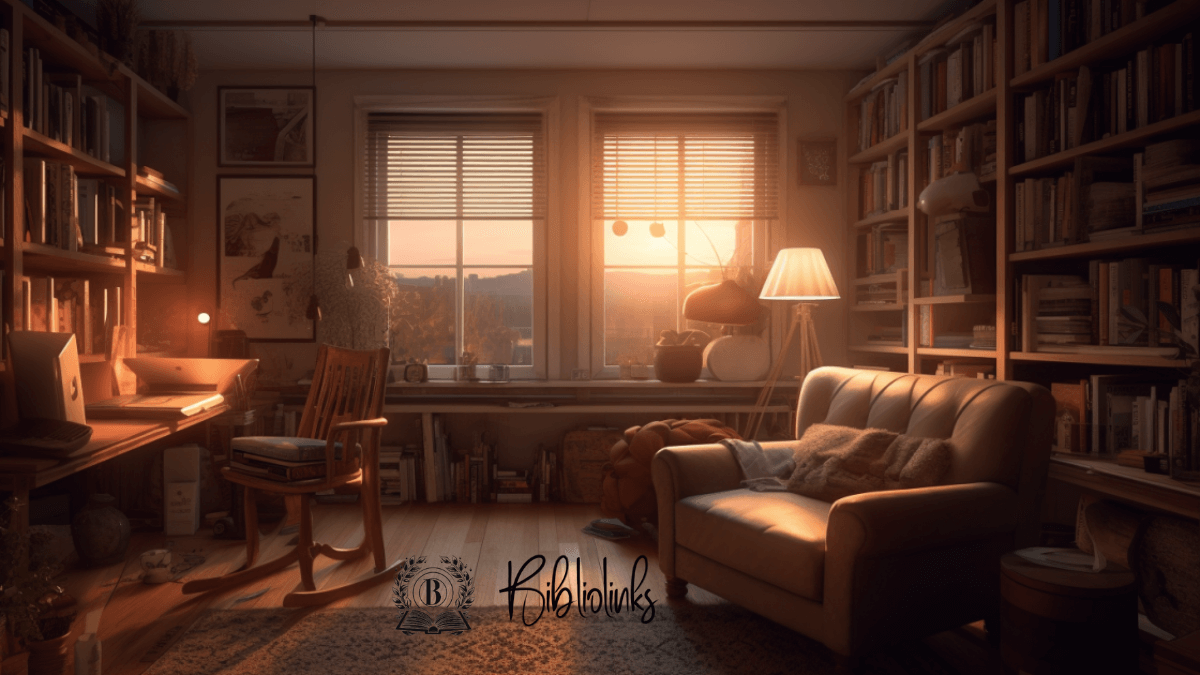Your basket is currently empty!

Designing the Ultimate Cozy Reading Space: Tips and Tricks
Creating the Ideal Reading Environment: Tips for a Cozy and Productive Reading Space
designing a cozy reading environment is a holistic process that encompasses selecting the right location, ensuring comfortable seating, providing proper lighting tips, personalizing your space, reducing distractions and noise, organizing your reading materials, incorporating nature, and enhancing the experience with useful accessories like a reading nook.
It’s essential to remember that tailoring your reading space to suit your personal preferences and needs is the most important aspect. By taking these tips into account, you can create a cozy, productive reading environment that not only enhances your enjoyment of books, including memoirs and personal growth stories but also supports and nurtures your reading habits.
A. The importance of a comfortable reading environment
A comfortable reading environment is essential for anyone who enjoys getting lost in a good book. It can significantly impact your ability to concentrate, retain information, and fully immerse yourself in the story. By creating a cozy and inviting reading space, you can transform your reading experience into a truly relaxing and enjoyable pastime.
B. The impact of an ideal reading space on focus and enjoyment
An ideal reading space not only enhances your focus and comprehension but also elevates the overall enjoyment of reading. A well-designed space can help reduce distractions, provide ample lighting, and offer a comfortable setting that encourages you to spend more time reading. By investing time and effort into creating a reading environment tailored to your preferences, you can cultivate a deeper appreciation for the world of books and improve your reading habits.
II. Choosing the right location
A. Considerations for selecting a reading spot
When selecting the perfect spot for your reading space, it’s essential to consider factors such as comfort, lighting, and potential distractions. Look for a location that allows you to feel relaxed and focused. Ideally, this area should be separate from high-traffic or noisy parts of your home, such as the living room or kitchen. You may also want to consider access to natural light, as it can create a more soothing atmosphere and help reduce eye strain.
B. The benefits of a dedicated reading area
Creating a dedicated reading area has numerous benefits. It helps establish a clear boundary between your reading space and other parts of your home, reducing distractions and allowing you to fully concentrate on your book. Additionally, a dedicated reading area can serve as a personal sanctuary where you can escape from everyday stress and unwind with a good book. This space can also encourage more consistent reading habits, as it provides a comfortable and inviting environment specifically designed for reading.

III. Comfortable seating options
A. Types of chairs and seating arrangements
There are various seating options to consider for your reading space, such as armchairs, recliners, chaise lounges, bean bags, or even cozy floor cushions. The best choice will depend on your personal preferences, available space, and budget. It’s important to choose a chair that provides adequate support and comfort for extended reading sessions.
B. Tips for selecting the perfect reading chair
Assess the chair’s comfort and support: Look for chairs with good cushioning, back support, and adjustable features that suit your body type and posture.
Evaluate the size and scale: Choose a chair that fits comfortably within your reading space without overwhelming the area.
Consider additional features: Some chairs come with built-in storage, cup holders, or other useful features that can enhance your reading experience.
Test the chair: If possible, sit in the chair for a while to ensure it’s comfortable and supportive for long reading sessions.
IV. Lighting for a pleasant reading experience
A. The significance of proper lighting for reading
Proper lighting is crucial for a pleasant and strain-free reading experience. Adequate lighting helps reduce eye strain, prevents headaches, and ensures you can easily see and comprehend the text.
B. Types of lighting options and their benefits
- Ambient lighting: This is the general lighting in a room, which can be achieved through ceiling lights, wall sconces, or floor lamps. Ambient lighting creates a cozy atmosphere and ensures a well-lit space.
- Task lighting: This type of lighting is focused and directed at your reading area, typically using desk lamps or adjustable floor lamps. Task lighting helps eliminate shadows and provides concentrated illumination for reading.
- Natural light: Whenever possible, take advantage of natural light by positioning your reading area near a window or other source of daylight. Natural light is often more comfortable and easier on the eyes than artificial light.
V. Personalizing your reading space
A. Incorporating personal touches and décor
Adding personal touches to your reading space can make it feel more inviting and tailored to your preferences. Consider incorporating items like artwork, photographs, or decorative objects that reflect your personality and interests. You can also add cozy textiles, such as throw blankets, pillows, or area rugs, to create a warm and inviting atmosphere.
B. Using color schemes and textures to create a cozy atmosphere
The color scheme and textures in your reading space can significantly impact its overall feel. Consider using soothing, calming colors like soft blues, greens, or neutrals to create a relaxing environment. Textures can also play a role in your space’s coziness: plush fabrics, soft rugs, and warm materials like wood can make your reading area feel more inviting.
VI. Reducing distractions and noise
A. Strategies for minimizing interruptions
To minimize distractions in your reading space, consider the following strategies:
- Turn off or silence electronic devices.
- Close doors or use curtains to create a sense of separation from other parts of your home.
- Establish boundaries with family members or roommates to ensure you have dedicated, uninterrupted reading time.
B. Soundproofing and noise-reduction techniques
Install weatherstripping or door sweeps to seal gaps around doors and windows.
Use heavy curtains, rugs, or wall hangings to help absorb sound.
Consider using white noise machines, fans, or soft music to create a consistent background noise that can help drown out outside distractions.
VII. Organizing your books and reading materials
A. Storage solutions for a clutter-free reading environment
Keeping your reading space organized and clutter-free can help maintain focus and make the area more inviting. Consider using bookshelves, floating shelves, or storage ottomans to keep your books and reading materials organized. Additionally, you can use decorative baskets or boxes to store smaller items like bookmarks, reading glasses, or notebooks.
B. Creative bookshelf ideas and display options
- Use a ladder shelf for a unique and stylish storage solution.
- Experiment with wall-mounted shelves in different arrangements to create a visually appealing display.
- Utilize a bookcase with adjustable shelves to accommodate books of varying sizes.
- Create a rotating book display to showcase your current reads or favorite titles.
- Consider using a multi-functional piece of furniture, like a bookshelf with a built-in reading nook or seating area.
VIII. Incorporating nature into your reading space
A. Benefits of natural elements in your reading environment
Incorporating nature into your reading space can create a calming atmosphere and enhance your overall well-being. Natural elements like plants, sunlight, and fresh air can improve air quality, reduce stress, and contribute to a more serene environment.
B. Ideas for bringing the outdoors in
- Position your reading space near a window to take advantage of natural light and views of the outdoors.
- Add indoor plants or a small indoor garden to improve air quality and add visual interest.
- Use natural materials like wood, stone, or rattan in your furniture and décor.
- Incorporate nature-inspired artwork or photography into your space.
IX. Enhancing the reading experience with additional accessories
A. Recommendations for useful reading tools and gadgets
- Bookmarks to keep your place in a book without damaging the pages.
- Book light for reading in low-light situations.
- A book stand or holder to maintain a comfortable reading position.
- Noise-canceling headphones to block out distractions.
- An e-reader or tablet for digital reading options.
B. Comfort items to make your reading space cozier
- Throw blankets and pillows for added warmth and comfort.
- A footrest or ottoman to elevate your feet while reading.
- A side table for holding drinks, snacks, or reading materials.
- Scented candles or essential oil diffusers create a relaxing ambiance.
You might read: 7 Tips for Boosting Your Reading Habit